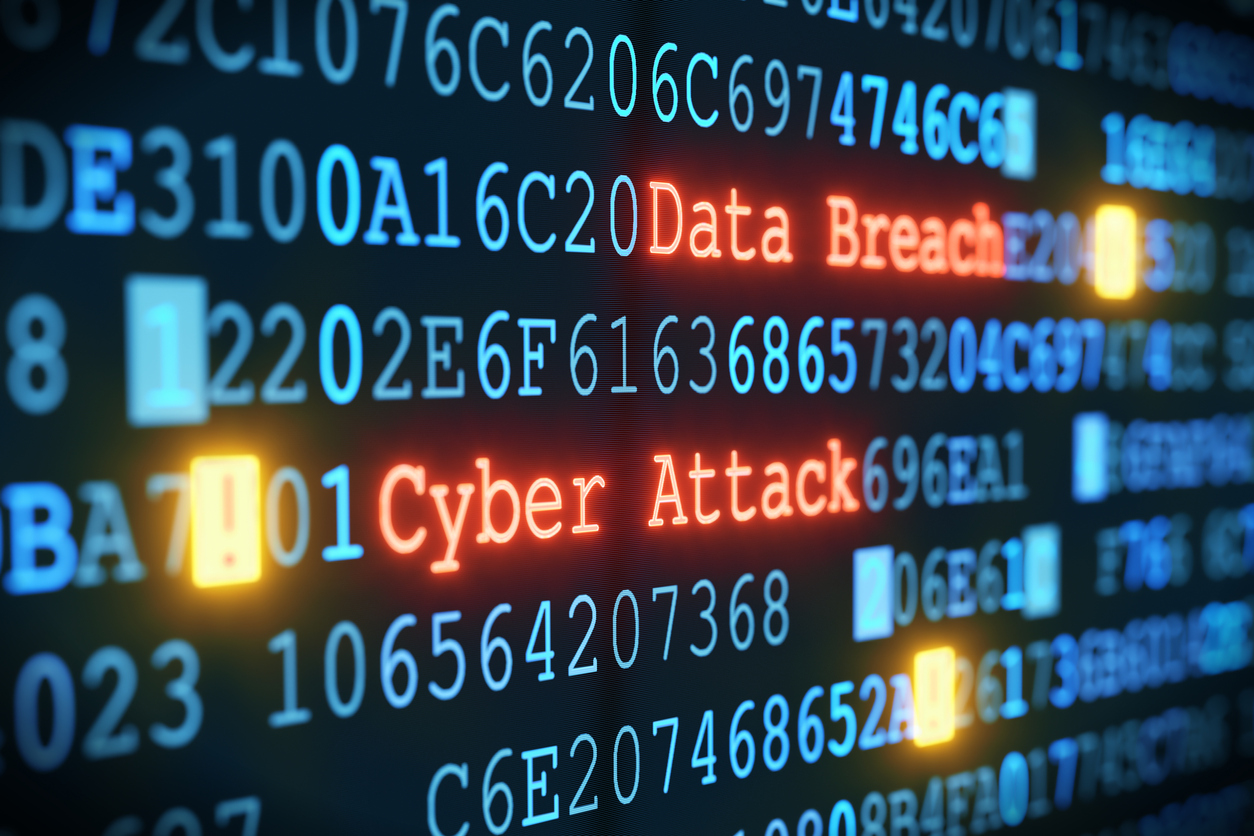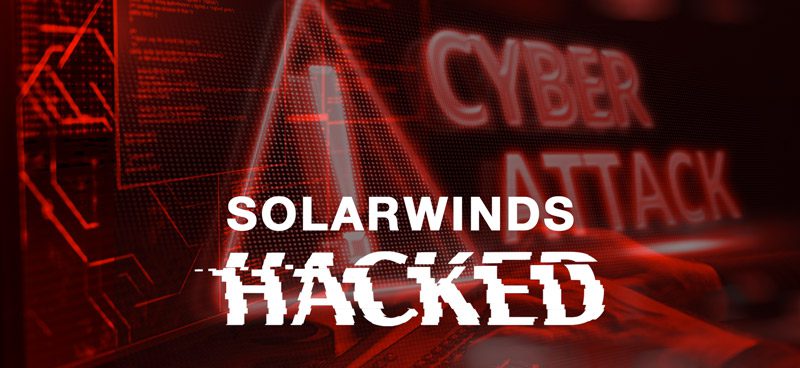
Introduction
In recent years, cybersecurity breaches have become a growing concern for businesses and individuals alike. The SolarWinds cybersecurity breach is a significant breach that has greatly affected the tech industry.This article aims to provide an overview of the SolarWinds breach and emphasize the importance of understanding its implications.
Overview of the SolarWinds cybersecurity breach
The SolarWinds cybersecurity breach refers to a sophisticated attack that targeted SolarWinds, a leading IT management software provider. The breach occurred in 2020 when hackers gained unauthorized access to SolarWinds’ systems and inserted malware into their software updates. As a result, numerous organizations that utilized SolarWinds’ software unknowingly downloaded the compromised updates, giving the hackers access to their systems.
The sheer scale of the breach is staggering. It is estimated that thousands of organizations, including major government agencies and Fortune 500 companies, were affected. Notably, the breach exposed sensitive information and potentially compromised national security.
Importance of understanding the implications
Understanding the implications of the SolarWinds breach is crucial for individuals and businesses alike. Here are some key reasons why:
- Potential damage to reputation: Organizations affected by the breach may face significant damage to their reputation. Trust is crucial in business relationships, and a breach like this can damage customer trust and confidence.
- Financial repercussions: Recovering from a cybersecurity breach can be costly. Organizations affected by the SolarWinds breach may incur substantial expenses related to investigating the breach, implementing security measures, and potentially compensating affected customers.
- Heightened cybersecurity awareness: The SolarWinds breach serves as a stark reminder that no organization is immune to cyber threats. It highlights the importance of maintaining robust cybersecurity measures and staying vigilant against evolving threats.
- Lessons for future prevention: By understanding the intricacies of the SolarWinds breach, organizations can learn valuable lessons about the importance of supply chain security, vulnerability management, and incident response.
- Personal data protection: Individuals should be aware of the potential risks associated with the SolarWinds breach. People should be careful and take steps to protect their personal information from being misused.
In conclusion, the SolarWinds cybersecurity breach serves as a wake-up call for organizations and individuals to prioritize cybersecurity. To reduce the risks of cyber threats, it’s important to understand the impact of the breach and implement strong security measures.By staying informed and remaining vigilant, we can contribute to a safer digital environment.Key Details of the Cybersecurity Breach
How the breach occurred
The SolarWinds cybersecurity breach was a highly sophisticated attack that targeted SolarWinds, a prominent IT management software provider. The breach was initiated by hackers who gained unauthorized access to SolarWinds’ systems. They managed to infiltrate the software updates by inserting malicious code, which was then unknowingly downloaded by numerous organizations that relied on SolarWinds’ software.
This is called a supply chain attack, when hackers use weaknesses in trusted suppliers to access their customers’ systems.By compromising SolarWinds’ software updates, the attackers were able to infiltrate the systems of the organizations that used the software, potentially gaining access to sensitive information and compromising their security.
Affected organizations and industries
The SolarWinds breach had far-reaching consequences, impacting thousands of organizations across various industries. Government agencies and Fortune 500 companies were victims of this breach, showing how serious and important it was.
The affected organizations included government entities, technology companies, financial institutions, and healthcare providers, among others. The breach exposed sensitive information, which could have potentially compromised national security and created vulnerabilities in critical infrastructures.
The breach also served as a wake-up call for organizations that rely on third-party software vendors. The text emphasized the dangers of supply chain attacks and the need to have strong security measures in place for the entire supply chain.
The incident underscored the need for enhanced cybersecurity practices and collaboration between organizations and their software suppliers. It also emphasized the importance of regularly updating and patching software systems to prevent vulnerabilities that can be exploited by hackers.
As a result of the SolarWinds breach, governments, organizations, and cybersecurity professionals have been prompted to reassess their security protocols and strengthen their defense against similar attacks. The breach showed how cybersecurity threats are always changing. We need to stay alert and take proactive steps to protect sensitive information.
In conclusion, the SolarWinds cybersecurity breach revealed the significant risks associated with supply chain attacks and the potential consequences for organizations and industries. It is important to understand the details and consequences of this breach to improve cybersecurity and prevent future attacks. Organizations must prioritize the robustness of their security measures and collaborate with trusted suppliers to ensure the integrity and safety of their systems and data.

Impact and Consequences
Extent of the damage caused by the breach
The SolarWinds cybersecurity breach was a highly sophisticated attack that had far-reaching consequences. Hackers gained unauthorized access to SolarWinds’ systems and inserted malicious code into the software updates. This allowed them to infiltrate the systems of numerous organizations that relied on SolarWinds’ software, potentially compromising their security and accessing sensitive information.
The breach impacted thousands of organizations across various industries, including major government agencies and Fortune 500 companies. This highlighted the severity and significance of the attack. Government entities, technology companies, financial institutions, and healthcare providers were among those affected.
The potential damage caused by the breach was significant. It exposed sensitive information that could have compromised national security and created vulnerabilities in critical infrastructures. The hackers had access to networks and could potentially steal sensitive data or disrupt operations.
Financial and reputational consequences for organizations
The financial and reputational consequences for organizations affected by the SolarWinds breach were substantial. The costs associated with investigating the breach, mitigating the damage, and strengthening security measures were significant. Organizations had to allocate resources to address the breach and prevent future attacks, which put a strain on their budgets.
Moreover, the breach had a significant impact on the reputation of the affected organizations. Customers and partners lost trust in these organizations’ ability to protect their data and maintain secure systems. The breach exposed vulnerabilities in their cybersecurity practices, which damaged their reputation as trustworthy and reliable entities.
In addition, organizations faced potential legal and regulatory consequences as a result of the breach. Companies had to follow data breach notification rules, deal with possible lawsuits from affected people or customers, and might have received fines or penalties for not protecting sensitive data properly.
Overall, the SolarWinds cybersecurity breach served as a wake-up call for organizations to reassess their security protocols and enhance their defense against similar attacks. It highlighted the need for continuous vigilance and proactive measures to protect sensitive data. Organizations must prioritize the robustness of their security practices, collaborate with trusted suppliers, regularly update and patch software systems, and implement stringent security measures throughout the supply chain.
By learning from the details and implications of the SolarWinds breach, organizations can improve their cybersecurity practices, mitigate the risks of similar attacks, and safeguard their systems and data.

Investigation and Attribution
Efforts to identify the culprits
Efforts have been made to find those responsible for the SolarWinds cybersecurity breach.The highly sophisticated nature of the breach indicated the involvement of a well-resourced and skilled adversary. Security researchers, intelligence agencies, and cybersecurity firms have been working tirelessly to trace back the attack to its source.
Possible culprits were identified through the use of advanced malware called SUNBURST. This malware was inserted into SolarWinds’ software updates. Analyzing the tactics, techniques, and procedures used by the attackers, cybersecurity experts have been able to attribute the breach to a state-sponsored threat actor.
Involvement of government agencies
Given the magnitude and impact of the SolarWinds breach, multiple government agencies have been actively involved in the investigation. The FBI, CISA, and NSA in the United States are working together to investigate the breach and reduce its effects.
The involvement of government agencies highlights the seriousness with which the breach is being treated. Cooperation and collaboration between governmental bodies, intelligence agencies, and private sector organizations have been crucial in gathering evidence, sharing threat intelligence, and collectively responding to the incident.
Furthermore, international partners and allies have also been engaged in the investigation, recognizing the global implications of the breach. Coordinated efforts aim to not only identify the perpetrators but also to prevent future attacks and strengthen global cybersecurity.
It is worth noting that attribution in cyber attacks is a complex process that often takes time. It involves analyzing technical indicators, monitoring communication channels, and piecing together various sources of intelligence. As the investigation into the SolarWinds breach continues, it is expected that further insights and attributions will emerge.
Efforts are being made to find those responsible for the SolarWinds breach. There are indications that suggest a state-sponsored threat actor is involved. Government agencies and international partners are actively involved in the investigation, underscoring the gravity of the incident. As the investigation progresses, more details are expected to emerge, shedding light on the motives and actors behind this sophisticated cyber attack.

Lessons Learned and Mitigation Measures
The SolarWinds cyberattack showed the importance of strong cybersecurity and proactive measures to prevent similar breaches in the future. Here, we will discuss the key lessons learned from the incident and the mitigation measures that organizations can take to enhance their cybersecurity posture.
Steps organizations can take to prevent similar breaches
- Implement Strong Access Controls: Limit access to sensitive systems and data based on the principle of least privilege. Regularly review and update access privileges to ensure only authorized individuals have access.
- Employ Multi-Factor Authentication (MFA): Require users to verify their identity with multiple factors, such as passwords, biometrics, or authentication apps. MFA adds an extra layer of security, making it more difficult for attackers to gain unauthorized access.
- Regularly Update and Patch Software: Vulnerabilities in software are often targeted by attackers. Keep all software, including operating systems and third-party applications, up to date with the latest security patches to minimize the risk of exploitation.
- Implement Network Segmentation: Divide your network into segments to restrict access to sensitive systems. This limits the lateral movement of attackers in case of a breach, reducing the potential damage they can cause.
- Conduct Regular Security Audits: Perform regular audits to identify vulnerabilities and weaknesses in your systems. Engage third-party security experts to conduct penetration testing and vulnerability assessments to identify and address any security flaws.
Importance of proactive cybersecurity measures
The SolarWinds breach emphasized the significance of taking a proactive approach to cybersecurity. Organizations should not wait for a breach to occur before strengthening their defenses. Some key proactive measures include:
- Continuous Threat Intelligence: Stay informed about the latest threats and vulnerabilities that could impact your organization. Establish partnerships with threat intelligence providers to receive timely alerts and updates.
- Employee Education and Awareness: Train your employees on cybersecurity best practices, such as identifying phishing emails, using strong passwords, and reporting suspicious activities. Human error is a big problem in cybersecurity. We need to promote a culture of security awareness to fix this.
- Regular Backup and Disaster Recovery: Implement a robust backup and disaster recovery plan to ensure that critical data can be restored in the event of a breach. Regularly test the effectiveness of your backups to ensure they are up to date and can be restored successfully.
- Incident Response Plan: Develop a comprehensive incident response plan that outlines the steps to be taken in the event of a breach. This plan should include procedures for containing the breach, investigating the incident, notifying stakeholders, and restoring normal operations.
By implementing these measures, organizations can better defend against potential cyberattacks and minimize the impact of breaches. It is important to recognize that cybersecurity is an ongoing process that requires constant vigilance and adaptation to evolving threats. By staying proactive and investing in cybersecurity, organizations can better protect themselves and their valuable data from malicious actors.
As the aftermath of the SolarWinds breach continues to unravel, organizations must learn from this incident and take concrete steps to improve their cybersecurity practices. The lessons learned and mitigation measures discussed here serve as a starting point for organizations to strengthen their defenses and safeguard against future breaches.The Future of Cybersecurity
The SolarWinds cybersecurity breach sent shockwaves through the industry, raising concerns about the state of cybersecurity and highlighting the need for enhanced defense strategies. This incident has significant implications for the cybersecurity landscape, prompting organizations to reevaluate their security practices and invest in proactive measures to prevent similar breaches in the future.
Implications for the cybersecurity landscape
The SolarWinds breach exposed vulnerabilities in supply chain security, revealing that even trusted software providers can unknowingly distribute malware-infected updates. This incident demonstrated the sophistication and persistence of modern cyber threats, as well as the potential impact they can have on organizations of all sizes. Businesses were alerted to reevaluate their cybersecurity and improve their protection methods.
As a result of the SolarWinds breach, regulatory bodies and policymakers are likely to increase scrutiny and impose stricter guidelines on organizations to ensure the security of their supply chains. This will necessitate stronger security measures and greater transparency in software development processes to minimize the risk of similar incidents in the future. It is important for governments, industry stakeholders, and security experts to work together to create standards and practices that can reduce supply chain risks.
Advancements in defense strategies
In response to the SolarWinds breach, organizations are recognizing the importance of proactive cybersecurity measures to defend against evolving threats. Traditional security approaches that focus solely on perimeter defense are no longer sufficient. Instead, businesses are embracing a more holistic approach that includes continuous monitoring, threat intelligence, and rapid incident response capabilities.
One key advancement in defense strategies is the adoption of Zero Trust architecture. This approach emphasizes the principle of least privilege, limiting access to sensitive systems and data based on user identity and context. By implementing Zero Trust principles, organizations can minimize the potential damage caused by breaches and prevent lateral movement within their networks.
Artificial intelligence (AI) and machine learning (ML) are also playing an increasingly important role in cybersecurity. These technologies can analyze vast amounts of data in real-time to identify patterns and anomalies that may indicate a cyber attack. AI-powered systems can proactively detect and respond to threats, reducing the time between detection and remediation.
Furthermore, the use of encryption and decentralized data storage technologies, such as blockchain, can enhance data security and integrity. These technologies add extra security by encoding data when stored and when moving, making it harder for hackers to access sensitive information.
In conclusion, the SolarWinds cybersecurity breach has prompted organizations to reevaluate their security strategies and invest in proactive measures to prevent similar incidents in the future. This breach has important consequences. It has lead to more scrutiny and the creation of stricter guidelines for supply chain security. Advancements in defense strategies, such as Zero Trust architecture and AI-powered systems, offer promising solutions to combat evolving cyber threats. By embracing these advancements and collaborating with industry experts, organizations can stay ahead of cybercriminals and safeguard their valuable data in the ever-changing cybersecurity landscape.
Conclusion
The SolarWinds cybersecurity breach has had a significant impact on the industry and serves as a wake-up call for organizations to reassess their security practices. The breach exposed vulnerabilities in supply chain security and highlighted the sophistication and persistence of modern cyber threats. In response, businesses must adopt a more comprehensive approach to cybersecurity to prevent similar incidents in the future.
Summary of key points
The SolarWinds breach demonstrated that even trusted software providers can unwittingly distribute malware-infected updates, exposing organizations to potential cyber attacks. It revealed the need for stronger security measures and greater transparency in software development processes to mitigate supply chain risks. Regulatory bodies and policymakers are likely to impose stricter guidelines on organizations to ensure the security of their supply chains.
Advancements in defense strategies are essential for defending against evolving threats. Traditional perimeter defense approaches are no longer sufficient, and organizations are embracing a more holistic approach that includes continuous monitoring, threat intelligence, and rapid incident response capabilities. The adoption of Zero Trust architecture, which limits access to sensitive systems and data based on user identity and context, is a key advancement in defense strategies.
Artificial intelligence (AI) and machine learning (ML) play a crucial role in cybersecurity. These technologies enable real-time analysis of vast amounts of data to detect patterns and anomalies that may indicate a cyberattack. AI-powered systems can proactively detect and respond to threats, reducing the time between detection and remediation.
Encryption and decentralized data storage technologies, such as blockchain, provide an additional layer of protection by encrypting data at rest and in transit. These technologies make it more challenging for attackers to compromise sensitive information, enhancing data security and integrity.
Importance of staying informed and proactive in cybersecurity
The SolarWinds breach underscores the importance of staying informed and proactive in cybersecurity. Organizations must continuously monitor and update their security measures to keep pace with evolving threats. It is crucial to invest in technologies and strategies that can detect and respond to cyberattacks effectively.
Collaboration between governments, industry stakeholders, and security experts is paramount. Sharing information, establishing standards, and developing best practices are crucial in creating a more secure cyber landscape. Organizations should also prioritize employee training and awareness programs to ensure that everyone understands their role in maintaining cybersecurity.
In conclusion, the SolarWinds breach serves as a reminder of the ever-changing nature of cyber threats. Organizations must adapt and invest in proactive cybersecurity measures to protect their valuable data and maintain the trust of their customers. By staying informed, embracing advancements in defense strategies, and fostering collaboration, organizations can mitigate the risk of cyberattacks and safeguard their digital assets.




